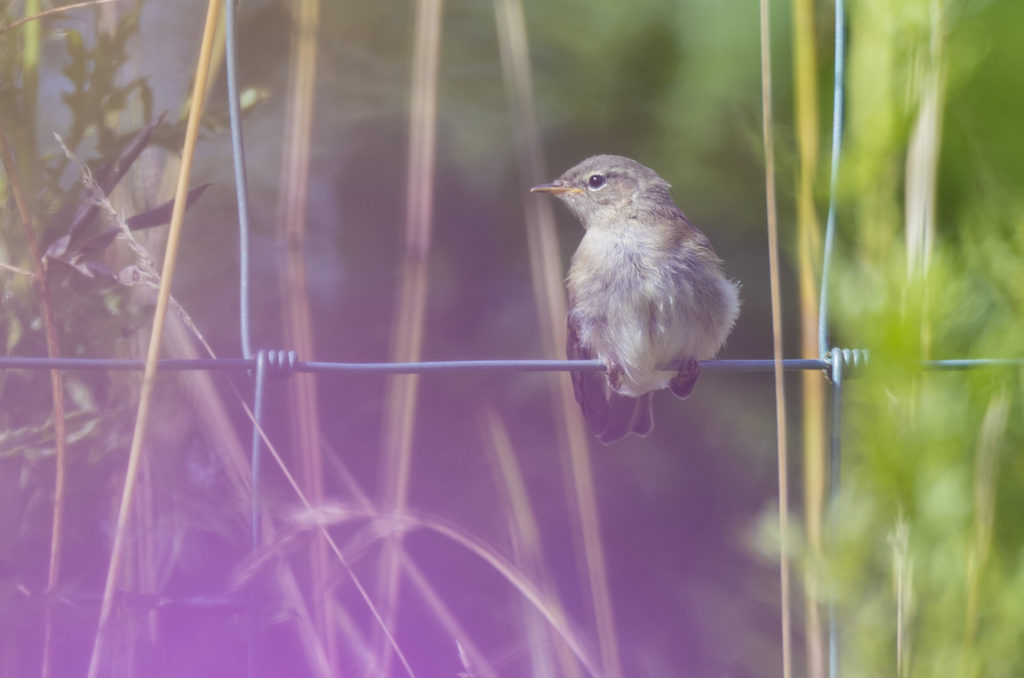First, let me set the scene – you’ve spotted a bird you want to photograph hopping through some foliage. You can’t see it that clearly and then suddenly it appears in a small gap, perfectly framed by leaves. You depress the shutter button to lock focus but, annoyingly, your auto focus locks on to one of the leaves. Either you end up with a lovely shot of some leaves in focus or you grapple to try and refocus on the bird while your subject calmly flies off to the next tree. It’s safe to say that having to refocus after every shot in a situation like this is very time consuming and can result in a missed shot.
It’s for this reason that I recently made the switch to using back button focus and, I’m pleased to say that it’s been a revelation. I certainly wouldn’t go back!
What is back button focus?
Back button focus splits the focus and shutter firing functions into two buttons so that you can control them separately instead of having to half-depress the shutter button to achieve focus. You then control the auto-focus with a button on the back of the camera and, once focus is achieved, you take the shot by fully depressing the shutter button. It can take a while to get used to but can make a massive difference to your photography.
Focusing through foliage
The image below is an example of when using back button focus has helped me to get the shot I wanted. I spotted this juvenile robin bouncing around in some bushes near to the path I was walking along. I decided to try and get a little closer to the bushes and, unexpectedly, the robin flew straight towards me. Despite being closer to me, it was now sitting in a bush where it was partially obscured by leaves. Using back button focus I was able to lock focus on the bird, after a bit of hunting from the auto focus, and then recompose my image slightly to get a better view of him through the leaves. Locking the focus and then leaving it alone meant that when it came to the crucial moment of firing the shutter, I knew the camera wasn’t going to refocus on a branch or leaf instead. All this happened in a matter of seconds but using back button focus helped to speed the process up and ensured I got the image I wanted of the robin, instead of some leaves in focus with a blurry bird in the background.

I wasn’t having a great day when I captured this image. I think the pressures of the last few months had just got on top of me and I was feeling tired and a bit angry if I’m honest. Spending a few moments with this little bird really lifted my mood. Its grumpy expression, so typical of young robins, seemed to be mocking my bad mood and I couldn’t help but laugh. It was only when I got home and checked the image closely that I noticed the tiny bit of red breast coming through on this bird, which was a lovely touch.
Focusing beyond flowers for colourful effects
Firstly, I should say that I have struggled to identify the juvenile bird in the image below. It wasn’t singing, as you can see from this image, which would have made identification easier. After reviewing lots of images and descriptions in books and online, I can only conclude that it is a juvenile chiffchaff. However, lovely people of the internet, please let me know if you think I have got this wrong!

When I spotted this bird on a walk through Lainshaw Woods last month, it was flitting around in the bushes before landing on the barbed wire fence. Although I could then see it clearly, there was still plenty of undergrowth between us. So I knew I would need to try to find a gap so that I could focus on the bird through the foliage. As with the robin image, I used back button focus to lock focus and then left it alone so that when it came to the crucial moment of firing the shutter, I knew the camera wasn’t going to refocus on one of the plants in front of me. The colour on this image was the result of shooting through some lilac flowers and greenery in the foreground. These dropped out of focus and created a wash of colour in front of the bird, which I quite like.
I would love to hear if you have tried using back button focus and whether it has made a difference to your photography – please comment below!

